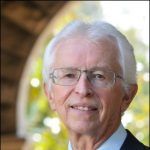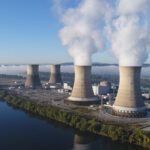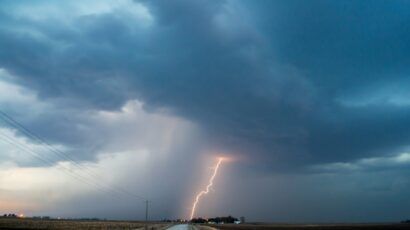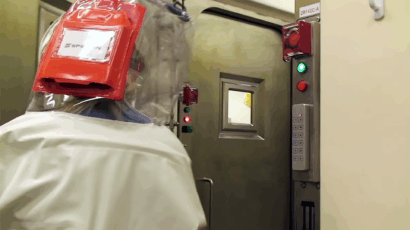Redefining denuclearization in North Korea
By Siegfried S. Hecker | December 20, 2010
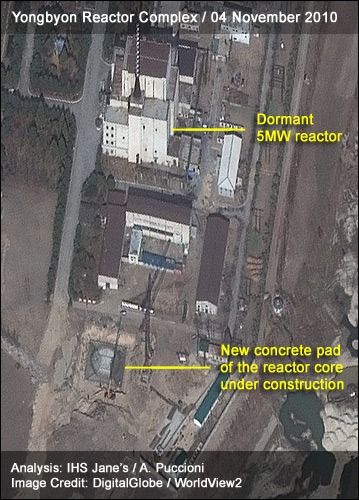
When my Stanford University colleagues and I were taken to the construction site of a small, experimental light water reactor (LWR) and to a new centrifuge facility in North Korea on November 12, it marked my seventh visit to North Korea and my fourth to the Yongbyon nuclear complex. I was not surprised that Pyongyang finally admitted to having a uranium enrichment program; however, I was stunned by the size and sophistication of the 2,000 centrifuges in the cascade hall visible from the ultra-modern second-floor control room.
This advancement in Pyongyang’s program raises troubling questions about how North Korea’s program got this far and the nature of the threat it poses. Moreover, in the wake of the recent military altercations between the two Koreas, our findings highlight the necessity to carefully review what we know about the nation’s nuclear program — and what we don’t know — so that we can prevent a further nuclear buildup and forestall the potential export of fissile materials and technology.
The small, experimental LWR. We visited the LWR construction site adjacent to the existing 5 megawatt electric (MWe) gas-graphite reactor (see Figure 1). The chief engineer told us the target date for operations is 2012; the design is complete, but many of the details are still being refined. With that in mind, I was surprised by how little information he was able to give me about the design parameters and materials. Still, I was able to determine some of the basic parameters: The reinforced-concrete containment structure is taking shape in a 7.1-meter deep pit on a reinforced-concrete pad that measures roughly 25 by 28 meters. It is 22 meters in diameter, 0.9 meters thick, and about 1 meter high on its way to 40 meters when complete. The power level is a modest 100 MW-thermal (likely to deliver 25 to 30 MWe power). The pressure vessel will be fabricated off site with high-strength steel, possibly with a stainless steel liner, transported by rail and welded on site. All components will be manufactured indigenously. The reactor will require 4 tons of uranium oxide fuel, enriched to 3.5 percent, typical for LWRs. The chief engineer acknowledged that they expect to have difficulty fabricating the oxide fuel since it is different from the metal fuel used in the gas-graphite reactor. They had not yet decided whether to use stainless steel or zircaloy cladding, neither of which they have used before.
Figure 1
Based on these observations, Pyongyang has chosen what appears to be a logical approach to develop LWR reactors. The experimental reactor is small enough that all components may well be produced and assembled indigenously. As it was explained to us, once North Korea’s engineers gain experience with the experimental reactor, they plan to build larger power reactors. The anticipated 2012 completion date, however, is unrealistic.
Pyongyang’s desire for nuclear electricity with LWRs is likely genuine since it has pursued acquisition of LWRs since 1985, first from the Soviet Union, then from the United States, and now on its own. Though it is technically possible that the LWR will be used to produce bomb-grade plutonium, I consider it unlikely because North Korea’s existing gas-graphite reactor is more suitable for the production of bomb materials than Pyongyang’s LWR.
I am more concerned about reactor safety. From what little we saw, it also appears that construction practices are not commensurate with international reactor safety standards and practices. The international reactor community has found that a strong, independent and well-informed regulatory agency is critical to assure safe construction and operations. It is unlikely that Pyongyang’s nuclear regulatory body meets these requirements. Finally, LWRs represent a new technology for North Korea, designed by a new team of young engineers trained in North Korea, to an unrealistic time schedule — all of which gives us reason to be concerned about safe reactor operations once it comes online.
The new centrifuge facility. From the second-floor control room, my colleagues and I could see into the high-bay hall, and our jaws dropped: Three rows of pairs of centrifuges extended 50 meters in both directions from the central observation deck. The modern control room had blinking LEDs and flat-panel monitors featuring numerous diagrams and flashing numbers. We were told that 2,000 centrifuges in six cascades were operating, producing low-enriched uranium (LEU) for the LWR under construction. We were hurried past the control room and through what they called the recovery room — the product withdrawal area, which allowed us to see some of the gas handling systems and tanks. Because of the hurried pace and limited access, we are not certain that the centrifuges were operational, but what we saw was not inconsistent with a partially or fully operational facility.
In response to my questions, the chief process engineer told us the capacity is 8,000 kilograms separative work units (SWU) per year, consistent with the fuel requirements for the experimental LWR. This also implies that what we saw were second-generation or so-called P2 centrifuges. Upon further questioning, he said that the rotors were iron alloys (likely maraging steel), with one bellows, designed indigenously, but modeled after the European URENCO designs and Japanese designs at Rokkasho-mura. Our rough estimate from the second-floor observation window was that the outer dimensions of the centrifuges were roughly 20 centimeters in diameter by 1.8 meters tall. Their enrichment target, we were told, is 2.2 to 4 percent, with an average level of 3.5 percent and tails of 0.27 percent.
An operational facility requires the production of uranium tetrafluoride and uranium hexafluoride. Between 1994 and 2002, when plutonium operations were frozen as a result of the US-North Korean Agreed Framework, Yongbyon lost the ability to make uranium tetrafluoride because of excessive corrosion of the hydrofluorination equipment.
The process engineer told me that they re-established the capability by building a new anhydrous line to make uranium tetrafluoride, which in turn is fluorinated to produce uranium hexafluoride, the feed gas for centrifuges. Yongbyon had never admitted having made uranium hexafluoride previously because it is not required for gas-graphite reactor fuel. Yet, now they claim they have this capability on site; however I was not allowed to see it. Nevertheless, my hosts made the case that they have everything they need to run the centrifuge facility. We also know that North Korea has ample uranium ore deposits for a domestic reactor program.
How did North Korea get this far? In April 2009, following North Korea’s third long-range rocket launch and the predictable UN condemnation that followed, Pyongyang announced that it would build its own LWR and begin an enrichment program to fuel the reactor. At Yongbyon, we were told that construction of the centrifuge facility began in April 2009 and that it was completed days before we arrived. But what we saw in Yongbyon demonstrates without a doubt that Pyongyang has pursued enrichment for many years. It has taken Iran more than 20 years without as much to show for its effort. For 15 years Tehran pursued uranium enrichment clandestinely. Once the Natanz facility was exposed by an Iranian resistance group, Tehran justified continued development as necessary for its commercial nuclear power aspirations. Pyongyang also appears to have pursued enrichment clandestinely for a long time, and now it has voluntarily shown us its progress, also justifying its existence for its new LWR aspirations. In both cases, it appears that pursuit of uranium enrichment was primarily for military reasons, or at best for dual use.
There has been plenty of evidence of Pyongyang’s uranium enrichment efforts over the years, but no smoking gun. Former Pakistani President Pervez Musharraf claimed in his memoir that A.Q. Khan delivered 20 P1 and four P2 centrifuges to North Korea around the year 2000. In late 2001, the CIA reported to Congress that North Korea attempted to acquire “centrifuge related materials in large quantities to support a uranium enrichment program.” The CIA’s December 2002 public estimate stated that North Korea could produce two atomic bombs annually through uranium enrichment beginning in mid-decade. By 2007, the CIA had downgraded its assessment.
During my first trip in January 2004, I was shown Pyongyang’s plutonium bomb fuel, and a Yongbyon official told my colleague that they had a uranium centrifuge program in the 1980s, but gave it up in favor of plutonium in the early 1990s once they demonstrated success in extracting plutonium in their reprocessing facility. This statement was later retracted with a staunch defense of no enrichment program and a denial of the US assertion that Pyongyang admitted a uranium enrichment program when US negotiators presented evidence of such a program.
In a comprehensive October 2010 review of Pyongyang’s enrichment program, David Albright and Paul Brannan, of the Institute for Science and International Security, conclude that North Korea’s procurement history indicates that it “has moved beyond laboratory-scale work and has the capability to build, at the very least, a pilot-scale gas centrifuge plant,” but doubted that the data indicated the construction of a 3,000-centrifuge plant, large enough for about two weapons per year. I was more skeptical and expected to find only an R&D level facility. Now that we have seen a 2,000-centrifuge smoking gun, we must re-analyze the data and dig deeper to see how they got this far.
In spite of Yongbyon’s claims to the contrary, I do not believe North Korea can produce many key specialty materials and components for the enrichment facility indigenously. According to Albright and Brannan, North Korea has an extraordinarily far-reaching illicit international network through which it procures specialty materials such as high-strength aluminum, maraging steel, and specialty epoxy, along with components such as ring magnets, bearings, vacuum pumps, valves, and flow meters. I believe that North Korean specialists built the centrifuges and successfully incorporated them into working cascades once they procured many of the requisite materials and components.
The extent of cooperation with A.Q. Khan prior to his 2004 house arrest in Pakistan is particularly troubling. Kahn not only supplied North Korea with a centrifuge starter kit, centrifuge controls, and software, but also trained some of the country’s technical specialists at the Khan Research Laboratories. Combined with Pyongyang’s own experience in the 1980s, the reciprocal visits of Khan’s specialists to North Korea facilities may have provided the hands-on training and coaching that later allowed Pyongyang to master centrifuge operations in a relatively short time.
Although exposure and termination of Libya’s enrichment program took A.Q. Khan out of the export business, it did not necessarily eradicate his network, which had transformed from a single-node import network to a more complex, multi-node export network. Pyongyang had also developed its own import nodes such as the Nam Chongang Trading Company, an arm of the General Bureau of Atomic Energy, which bought and sold a wide range of legitimate and illicit goods, including many with dual-use nuclear potential and which was recently sanctioned by the UN.
Recent reports by the Congressional Research Service and the UN Security Council Panel of Experts show how Pyongyang has been able to circumvent many of the sanctions imposed by UN Security Council Resolutions 1718 and 1874. Pyongyang successfully uses intermediaries, such as China, in which many of its companies operate to procure dual-use equipment. It uses transshipment countries such as Singapore, Malaysia, and the United Arab Emirates. Pyongyang also uses air and land routes through China with little risk of inspection. Recent increases in financial and business connections in China represent a particular vulnerability for dual-use transactions.
In a detailed analysis of global proliferation networks, Chaim Braun and Christopher Chyba linked a centrifuge for missiles deal between Pakistan and North Korea to the resurgence of Pyongyang’s centrifuge program in the 1990s. Close cooperation during the past few years between North Korea and Burma in missile technologies and possibly in nuclear technologies, along with long-standing cooperation with Iran open the possibility that Pyongyang is operating an A.Q. Khan-like proliferation network that has procurement, manufacturing, assembly, and transshipment nodes in countries with little transparency and suspected illegal commerce. Now that Pyongyang has apparently demonstrated its ability to acquire materials and components, as well as build and operate centrifuge facilities, it also greatly increases the risk of financially lucrative nuclear exports.
Why did Pyongyang show us these facilities? It wanted the world to know. We were credible messengers to verify that North Korea not only has uranium centrifuges, but they are modern and sophisticated. Pyongyang surely knows that its claim of having begun the program in 2009 is not credible, so by going public it may also be sending a not-so-subtle message that it has a second route to bomb fuel, namely the ability to produce HEU.
Although Pyongyang could have continued to hide its existing enrichment facilities, the announcement of its LWR program allowed it to justify having its own uranium enrichment program. Since UN sanctions prohibit nuclear assistance, even for ostensibly peaceful purposes, Pyongyang claims it has to do the enrichment itself. The centrifuge facility we saw will be able to produce about 2 tons of LEU per year, adequate for the small LWR. Although it also can be reconfigured to produce 30 to 40 kilograms of bomb-grade HEU fuel per year (sufficient for roughly one bomb), their willingness to show it to us and the obvious blue roof (see Figure 2) over the facility, which does nothing to hide it, suggests that it will indeed be used to produce reactor fuel.
Figure 2
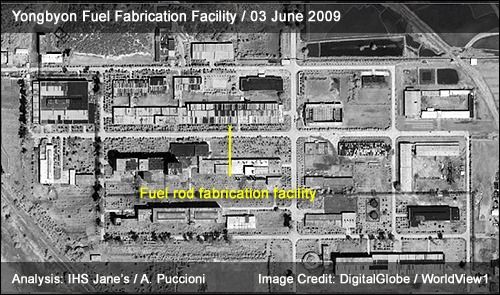
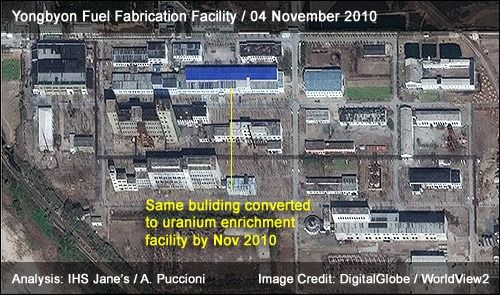
Still, it is likely that Pyongyang has another undisclosed facility that may be dedicated to HEU production. The centrifuge cascades we saw, or some subset of them, were likely built and demonstrated at an undisclosed facility and then duplicated at Yongbyon once the building was renovated. The possibility that North Korea had previously produced HEU was raised when minute traces of HEU were found on samples of aluminum tubes and copies of Yongbyon production records that Pyongyang reluctantly gave the United States in 2008 as a goodwill verification gesture.
How does the revelation of uranium enrichment change the security risk? Pyongyang already had the bomb, but not much of a nuclear arsenal. A 25-year pursuit of the plutonium route to the bomb, interrupted by the Agreed Framework and some of the Six-Party agreements, yielded a plutonium inventory of only 24 to 42 kilograms, sufficient for four to eight bombs. Given its limited and less-than-successful nuclear test history, these are likely primitive, rather than miniaturized for missile delivery.
During my 2007 visit to Yongbyon, I was given unprecedented access to its plutonium facilities, which convinced me that Pyongyang was prepared to give up the plutonium production complex. Subsequent actions have confirmed it: The 5 MWe gas-graphite reactor is shut down, no plutonium is being produced, and there is no plutonium in the pipeline to be reprocessed. The fact that the metal fuel rod fabrication facility was gutted and turned into a centrifuge hall and the cooling tower has not been rebuilt will make future plutonium production more time-consuming. Pyongyang has also expressed renewed interest in selling its remaining fresh uranium metal fuel rods, which it requires to restart its reactor, to South Korea if the price is right.
Although I cannot claim that I understand Pyongyang’s nuclear motivations, I can venture some observations based on my visits. Before the most recent visit, I believed that Pyongyang would settle for its handful of simple plutonium bombs for its deterrent. It would have to test again to miniaturize the bomb for missile delivery for a more potent deterrent. But it had a limited supply of plutonium and even if it restarted the reactor, it could produce only one bomb’s worth per year. Pyongyang appeared ready to give up the plutonium complex for appropriate diplomatic and economic gains while keeping its nuclear weapons, which it has repeatedly said are necessary in what it views as today’s hostile environment.
If Pyongyang now uses the new centrifuge facility to make one bomb’s worth of HEU per year or augments it with another bomb per year in a similar undisclosed facility, it provides a hedge, but does not dramatically change the security calculus. If, for any reason, Pyongyang has difficulties with its plutonium bombs, it could easily turn to HEU for a simpler, more assured path to a primitive bomb — one it may be able to field without nuclear testing. In terms of a miniaturized, missile-capable bomb, HEU has greater limitations than plutonium; and in either case, it would have to test again.
One risk of the now-disclosed uranium enrichment program is that Pyongyang will mount a stepwise campaign for large-scale HEU production. If North Korea is able to produce a much larger nuclear arsenal and conducts additional nuclear tests, it not only strengthens its deterrent, but becomes a much greater security threat. The HEU route to missile-capable bombs may have some attraction for North Korea if it received the same warhead design that A.Q. Khan sold to Libya. It was an HEU implosion device, believed to be based on a tested Chinese device, which is small enough to fit on some of Pyongyang’s missiles.
Whereas it appears likely that Pyongyang has a hidden centrifuge facility, one that may well be dedicated to HEU production, I consider large-scale HEU production unlikely at this time. North Korea cannot expand its centrifuge capacity at will, in my opinion, because they are still not able to produce most of the key materials and components indigenously. Thus, as Albright and Brannan pointed out, it is now imperative that the international community does more to shut down Pyongyang’s continuing illicit nuclear procurements.
More troubling is the possibility that North Korea could begin to export fissile materials or the means of producing them. Prior export of uranium hexafluoride to Libya and Pyongyang’s cooperation with Syria to build a plutonium production reactor give us reasons for concern. It has now expanded its export potential by demonstrating its ability to bring a modern centrifuge facility online. It may help Iran solve some of the difficulties it has experienced with its centrifuge program. Pyongyang’s success demonstrates how difficult it is to stop centrifuge procurement activities and how difficult facilities are to find. Moreover, should Pyongyang produce large quantities of HEU, the threat of export of fissile materials, either by the state or factions within the state, increases substantially. The market for HEU may be much more lucrative than that for plutonium because it is easier to fashion into simple bombs and it is more difficult to detect in transport.
So, where do we go from here? Pyongyang can ratchet up the current nuclear threat if it greatly expands HEU production at undisclosed sites, increases the size of its nuclear arsenal substantially, or conducts more tests to enhance its sophistication. Increased centrifuge capacity also heightens the export threat. Hence, the immediate response by the international community should be to limit Pyongyang’s nuclear buildup.
By unveiling the LWR and enrichment facility, Pyongyang has also complicated the diplomatic process by in effect redefining what is meant by denuclearization. Not only is it unlikely that Pyongyang will give up its nuclear arsenal anytime soon, but it will almost certainly insist on keeping its LWR program and centrifuges because the justification for its peaceful nature is more credible than for the plutonium program — of course, no less problematic as the Iranian situation has demonstrated.
It is time for the United States to conduct a thorough review of its policies on Northeast Asia security. Much has happened in the past 10 years, yet the US government continues to view North Korea primarily through nuclear lenses, while Pyongyang sees normalization of political and economic relations as imperative. Whereas our Foreign Ministry host told us that Pyongyang continues to support denuclearization of the Korean Peninsula as agreed to in the September 2005 Six-Party joint statement, he quickly added that Washington could begin the normalization process by reaffirming part of the October 2000 US-DPRK joint communiqué, which stated that neither government would have hostile intent toward the other and confirmed the commitment of both to make every effort to build a new relationship free from past enmity. In the meantime, we must take steps to prevent an expansion of North Korea’s nuclear program and de-escalate the mounting tensions between the two Koreas. The fundamental and enduring goal as agreed to in the joint statement must be denuclearization of the Korean Peninsula.
However, since that will take time, we must quickly press for what I call the three no’s: No more bombs, no better bombs (which means preventing further nuclear testing), and no export, in return for one yes — our willingness to seriously address North Korea’s fundamental insecurity. Based on our discussions with Pyongyang officials, we can begin to address North Korea’s security concerns along the lines of the joint communiqué. The greatest current vulnerabilities in enforcement appear to be in China. Beijing has not been willing to tighten sanctions on Pyongyang to denuclearize now, but it may support the three no’s and one yes policy as a necessary first step, one that it views consistent with its desire to preserve peace and stability on the Korean Peninsula. This approach may just be enough to get Beijing to take a much more aggressive stance to help shut down Pyongyang’s nuclear import and export networks.
Together, we make the world safer.
The Bulletin elevates expert voices above the noise. But as an independent nonprofit organization, our operations depend on the support of readers like you. Help us continue to deliver quality journalism that holds leaders accountable. Your support of our work at any level is important. In return, we promise our coverage will be understandable, influential, vigilant, solution-oriented, and fair-minded. Together we can make a difference.
Topics: Nuclear Energy, Nuclear Weapons, Opinion
